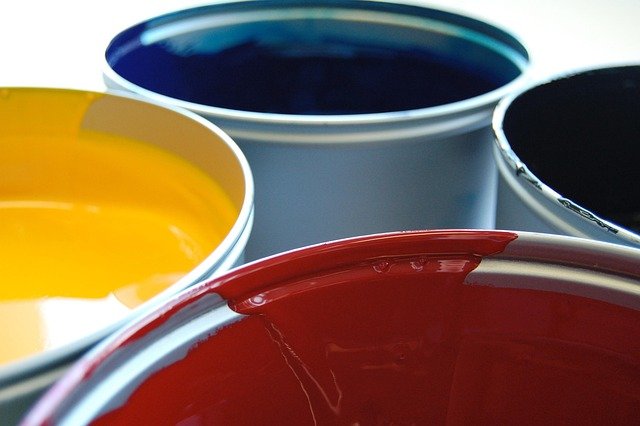Whimsical Washi: Transforming Interiors with Japanese Paper Art
In the ever-evolving world of interior design, a delightful new trend is capturing the imagination of homeowners and decorators alike: the use of washi tape in home decor. This versatile Japanese paper art is not just for crafters anymore; it's making a bold statement in modern interiors, offering a unique blend of tradition and contemporary style. From accent walls to furniture makeovers, washi tape is proving to be a game-changer in the realm of accessible, customizable design.

The modern iteration of washi tape emerged in the aftermath of the 2006 Tohoku earthquake and tsunami in Japan. Originally developed as a masking tape for painting, it quickly gained popularity for its decorative potential and ease of use. Today, washi tape comes in an endless array of colors, patterns, and widths, making it a versatile tool for interior design enthusiasts.
Washi Walls: A New Take on Wallpaper
One of the most striking applications of washi tape in home decor is its use as an alternative to traditional wallpaper. Designers are creating intricate geometric patterns, abstract murals, and even faux architectural features using nothing but strips of washi tape. This technique offers several advantages over conventional wallpaper:
-
Customization: Homeowners can create completely unique designs tailored to their space and preferences.
-
Impermanence: Unlike wallpaper, washi tape can be easily removed without damaging walls, making it ideal for renters or those who like to frequently update their decor.
-
Cost-effectiveness: Creating a washi tape mural is significantly less expensive than purchasing and installing wallpaper.
-
Eco-friendliness: Many washi tapes are biodegradable, aligning with the growing demand for sustainable home products.
Furniture Facelift: Washi as a Restoration Tool
Beyond walls, washi tape is breathing new life into furniture pieces. From covering scratches on wooden tables to completely transforming the look of a dated dresser, this humble tape is proving to be a powerful tool in furniture restoration and upcycling.
Designers are using washi tape to add intricate inlay-like patterns to tabletops, create colorful geometric designs on cabinet fronts, and even wrap entire pieces of furniture for a temporary style update. This approach not only extends the life of existing furniture but also encourages creativity and personalization in home decor.
Washi in Unexpected Places: From Ceilings to Floors
The versatility of washi tape allows for its application in surprising areas of the home. Innovative designers are using it to create faux crown molding, add interest to plain ceilings, and even create temporary floor patterns in low-traffic areas.
In the kitchen, washi tape is being used to line shelves, create backsplash designs, and add personality to appliances. In bathrooms, it’s appearing on mirror frames, shower doors, and even toilet tank lids, offering a whimsical touch to often-overlooked spaces.
The Psychology of Washi: Impermanence and Mindfulness in Design
The rise of washi tape in interior design speaks to a broader shift in how we approach our living spaces. In a world where permanence can feel daunting, the temporary nature of washi tape designs offers a sense of freedom and flexibility. This aligns with the growing interest in mindfulness and the Japanese concept of wabi-sabi, which finds beauty in imperfection and impermanence.
Using washi tape in home decor encourages a more playful, experimental approach to design. It allows homeowners to try bold patterns or colors they might hesitate to commit to with more permanent solutions. This low-risk, high-reward approach to decorating can lead to more personalized, expressive interiors that truly reflect the inhabitants’ personalities and evolving tastes.
Washi and Technology: A Surprising Partnership
As the smart home trend continues to grow, washi tape is finding unexpected applications in technology integration. Designers are using it to camouflage cords, create decorative frames around smart home displays, and even incorporate it into DIY smart home projects.
Some tech-savvy decorators are experimenting with conductive washi tape to create interactive wall art or hidden touch-sensitive controls for smart home features. This intersection of traditional craft and cutting-edge technology represents an exciting frontier in interior design, blending the tactile charm of handmade elements with the convenience of modern living.
The Future of Washi in Home Decor
As washi tape continues to gain popularity in interior design, we can expect to see more innovative applications and specialized products emerging. Manufacturers are already developing wider rolls for larger-scale projects, as well as textured and metallic finishes to expand design possibilities.
The DIY-friendly nature of washi tape aligns perfectly with the growing maker movement and the desire for more personalized, handcrafted elements in our homes. As sustainability becomes an increasingly important consideration in design choices, the eco-friendly credentials of many washi tapes will likely contribute to their continued popularity.
In conclusion, the rise of washi tape in home decor represents more than just a passing trend. It embodies a shift towards more flexible, personalized, and sustainable design practices. By embracing this versatile material, homeowners and designers are rediscovering the joy of experimentation and the beauty of impermanence in our living spaces. As we continue to redefine what makes a house a home, washi tape stands out as a small but mighty tool in the pursuit of spaces that truly reflect our identities and aspirations.





